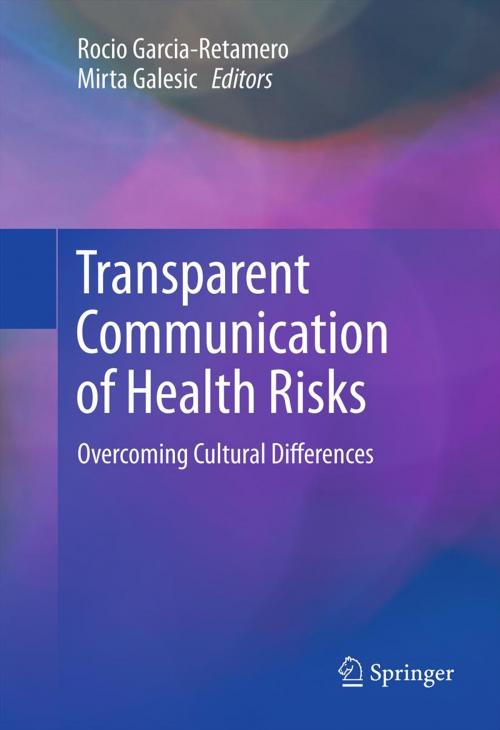Transparent Communication of Health Risks
Overcoming Cultural Differences
Nonfiction, Health & Well Being, Medical, Reference, Administration| Author: | ISBN: | 9781461443582 | |
| Publisher: | Springer New York | Publication: | January 9, 2013 |
| Imprint: | Springer | Language: | English |
| Author: | |
| ISBN: | 9781461443582 |
| Publisher: | Springer New York |
| Publication: | January 9, 2013 |
| Imprint: | Springer |
| Language: | English |
Recent research in health decision making has shown that many patients, even those with a college education, have difficulties grasping a host of numerical concepts, including percentages and probabilities. Yet, basic numeracy and graph literacy are essential for understanding information relevant to making decisions about health, such as the incidence and prevalence of different diseases, risk reductions from medical screenings and treatments, and risk increases from side effects of treatments and unhealthy behaviors. Patients who have problems understanding such numerical concepts are often prone to errors in risk perception and medical choices. Importantly, informed medical decision making, heavily reinforced these days by the legal requirement for informed consent, depends critically on communication of quantitative medical information. Meeting the challenge of effectively communicating medical information to patients with different levels of numeracy and graph literacy has become more important than ever.
Transparent Communication of Health Risks describes a series of cross-cultural studies investigating how people in countries with different medical and educational systems understand numerical and graphical information, what they know about existing medical treatments and screenings, which presentation formats help them better understand the relevant information, and how they use the data to make medical decisions. Focusing on the careful measurement of necessary knowledge and skills, the book also includes validated numeracy and graph literacy scales in English, Spanish, and German. Some of the topics covered in the book are:
- numeracy and graph literacy for health;
- measuring risk comprehension in educated samples;
- communicating information about medical treatment and screening;
- reducing the effect of framed messages about health;
- the effect of individual differences on shared decision making; and
- transparent health information in the media.
Transparent Communication of Health Risks emphasizes the importance and value of working toward the development of tailored risk communication interventions and clarifies the tasks ahead for health psychologists, public health professionals, pharmaceutical and medical education companies, medical physicists, and nurses.
Recent research in health decision making has shown that many patients, even those with a college education, have difficulties grasping a host of numerical concepts, including percentages and probabilities. Yet, basic numeracy and graph literacy are essential for understanding information relevant to making decisions about health, such as the incidence and prevalence of different diseases, risk reductions from medical screenings and treatments, and risk increases from side effects of treatments and unhealthy behaviors. Patients who have problems understanding such numerical concepts are often prone to errors in risk perception and medical choices. Importantly, informed medical decision making, heavily reinforced these days by the legal requirement for informed consent, depends critically on communication of quantitative medical information. Meeting the challenge of effectively communicating medical information to patients with different levels of numeracy and graph literacy has become more important than ever.
Transparent Communication of Health Risks describes a series of cross-cultural studies investigating how people in countries with different medical and educational systems understand numerical and graphical information, what they know about existing medical treatments and screenings, which presentation formats help them better understand the relevant information, and how they use the data to make medical decisions. Focusing on the careful measurement of necessary knowledge and skills, the book also includes validated numeracy and graph literacy scales in English, Spanish, and German. Some of the topics covered in the book are:
- numeracy and graph literacy for health;
- measuring risk comprehension in educated samples;
- communicating information about medical treatment and screening;
- reducing the effect of framed messages about health;
- the effect of individual differences on shared decision making; and
- transparent health information in the media.
Transparent Communication of Health Risks emphasizes the importance and value of working toward the development of tailored risk communication interventions and clarifies the tasks ahead for health psychologists, public health professionals, pharmaceutical and medical education companies, medical physicists, and nurses.















